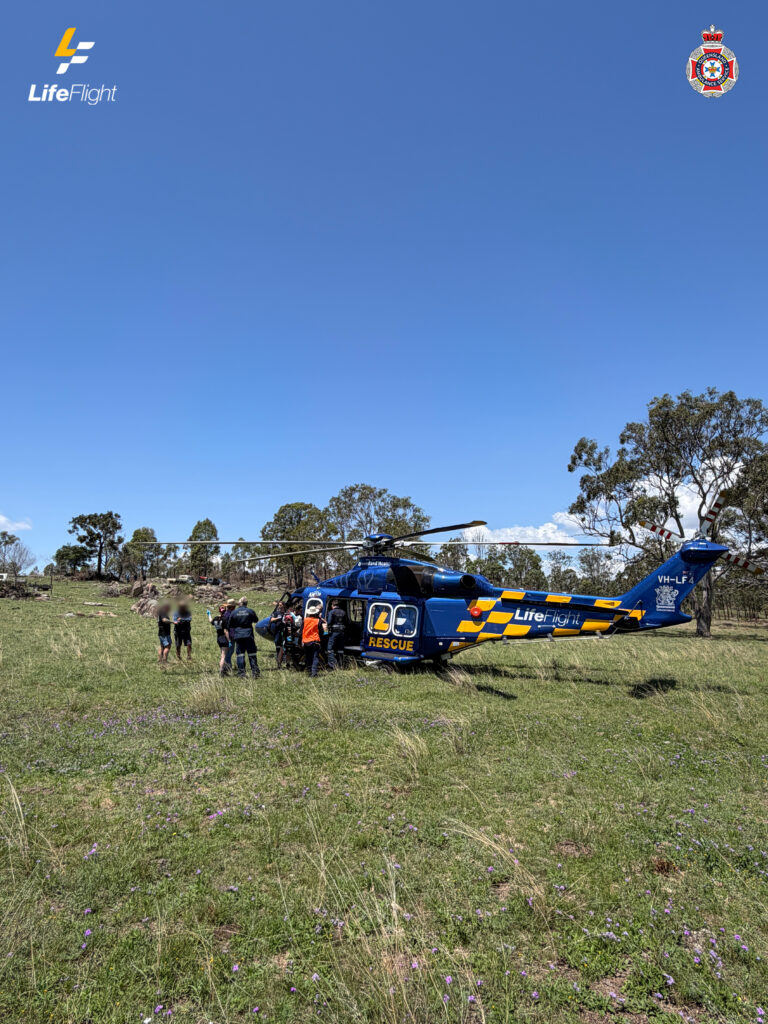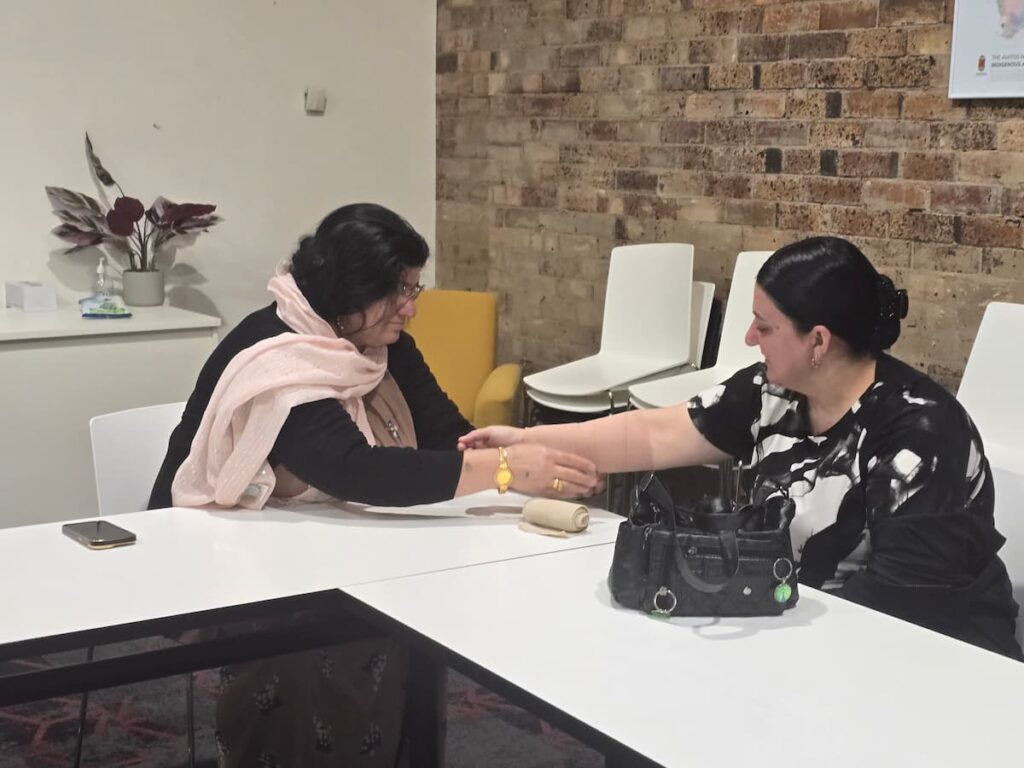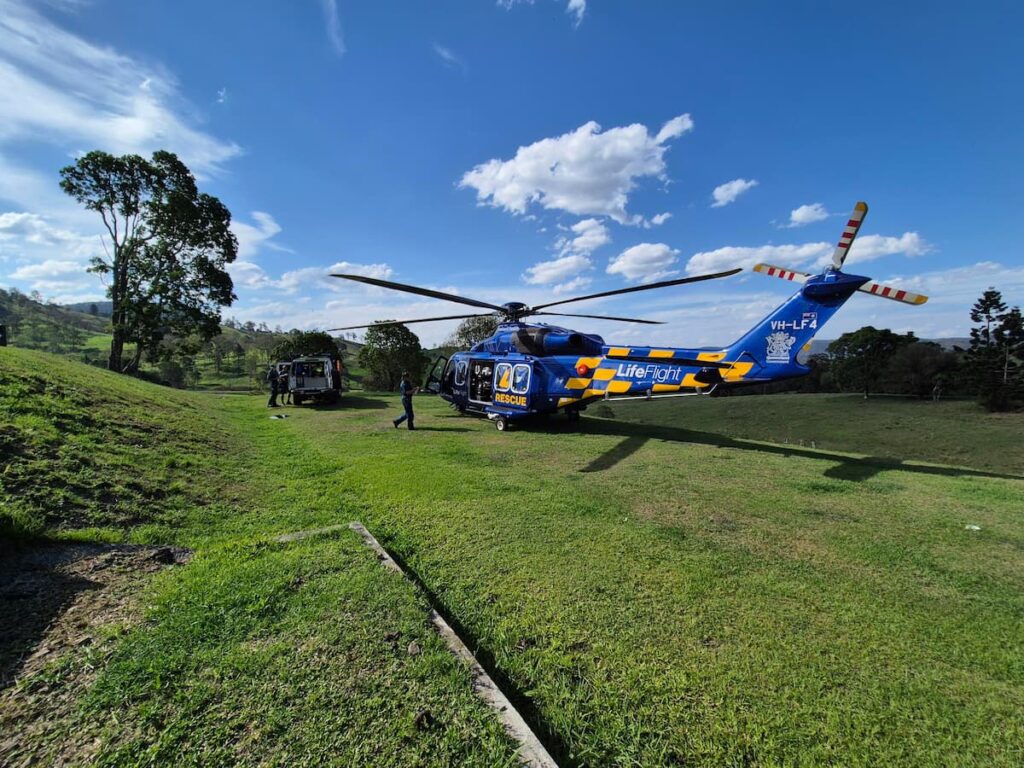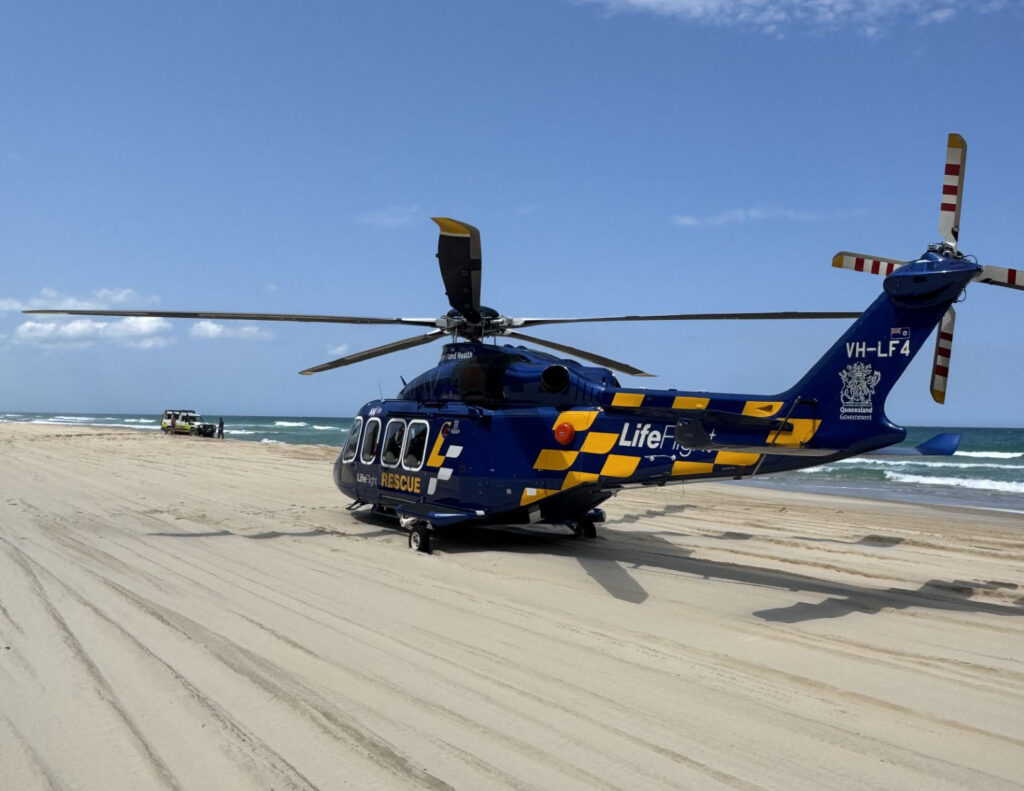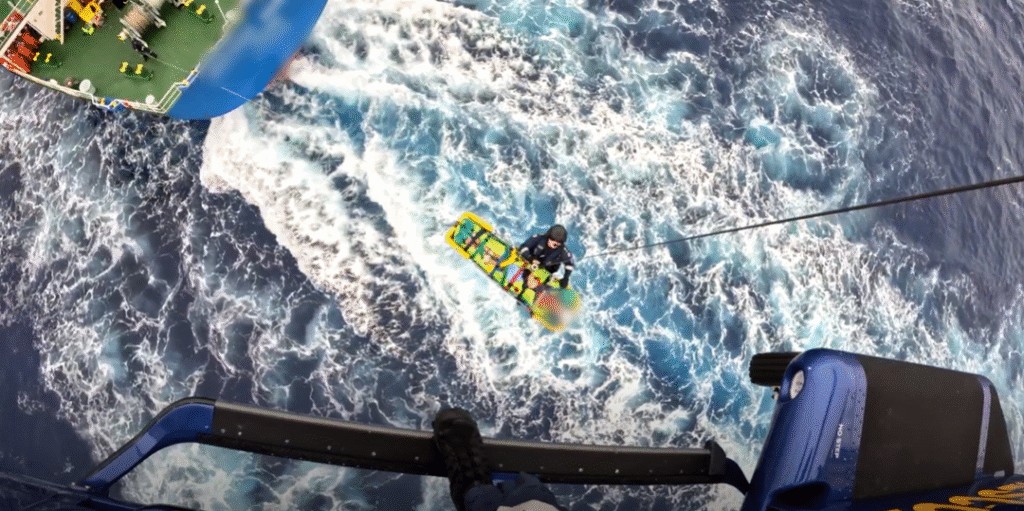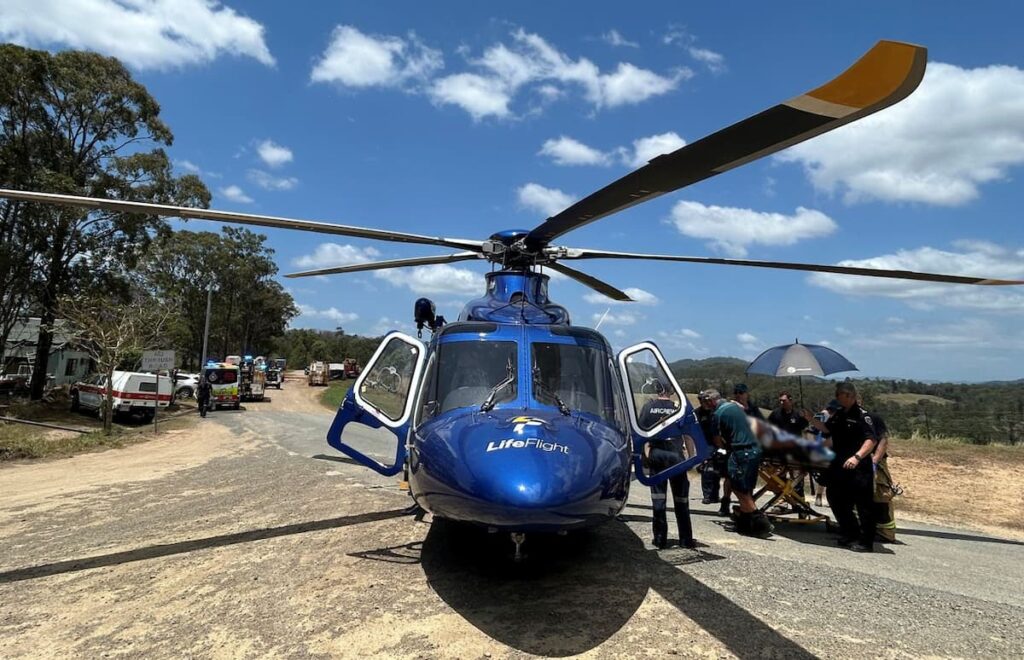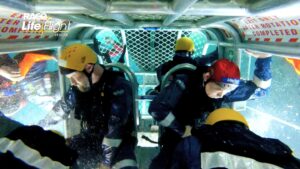
Twenty-eight new RACQ LifeFlight Rescue Critical Care Doctors are taking off on an adventure of a lifetime, saving lives around Queensland, after conquering a challenging training course.
The highly skilled doctors, hand-picked from around Australia and the world, have been dunked underwater and hoisted into the air, to get them rescue ready.
Nine will be based in Brisbane, working on the RACQ LifeFlight Rescue helicopter and on the RACQ LifeFlight Rescue Air Ambulance Jets.
UK doctor Sam Worley has travelled halfway across the world for the opportunity.
“The variation is something that drew me here, so the mix of primary jobs where you go out to an accident scene or someone who’s unwell, picking someone up from a rural hospital, stabilising them and bringing them back, even search and rescue jobs – that’s not something you can do in the UK with that much variety,” Dr Worley said.
“The weather’s obviously also a lot better here.”
He’s already familiar with flying in a chopper, after previously working on an air ambulance in Wales, but is looking forward to the challenges of Queensland’s longer distances.
Dr Worley is also planning on making the most of his time in Australia, on his days off, with outdoor adventures on his to-do list.
“I just bought a four-wheel-drive, so I’m keen to try out a bit of sand driving, get a tent and go camping on weekends.”
The Brisbane-based doctors may also be called on to work at other aeromedical bases across Queensland.
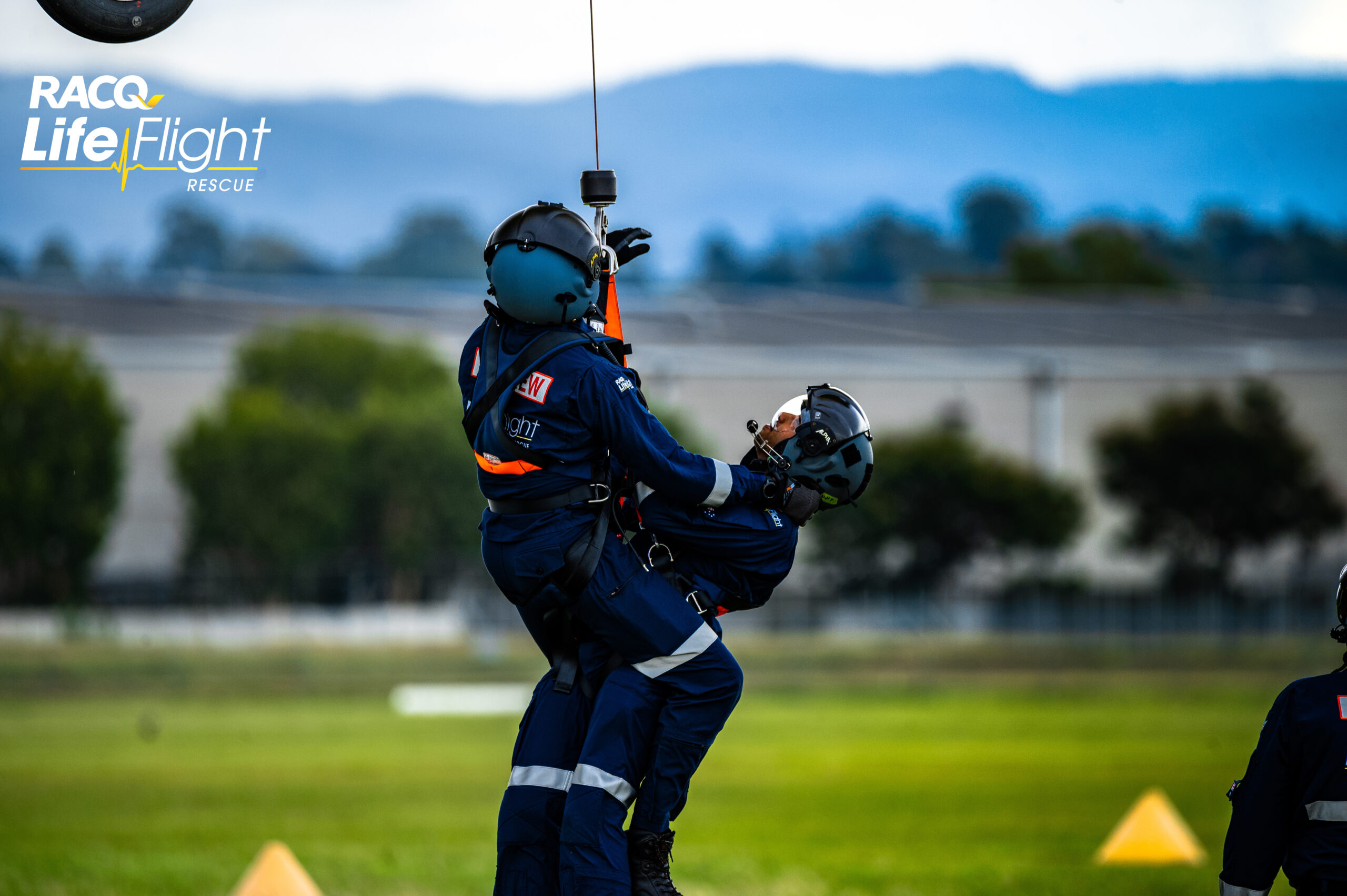
The recruits underwent an intensive eight day program run through the LifeFlight Training Academy.
The doctors practiced adapting to pre-hospital care and learned all they need to know to stay safe in the air, including how to winch patients.
“This is one of the most important parts of their training,” RACQ LifeFlight Rescue Chief Aircrew Officer Simon Gray said.
“The ability to be able to be inserted anywhere they may need to treat a patient, is a really crucial skill to have and it’s something most of them have never done before.”
Before venturing out for their first real winch, they learned all about aviation safety and performed several practices while the aircraft was still in the hangar.
“For a lot of them it is very fun, but it is very stressful. They’re underneath a helicopter, they’re hanging off a wire cable. So we just need to calm them down and help them follow the procedures they’ve been given,” Mr Gray said.
From one extreme to another – the recruits also had to learn how to safely make their way out of a helicopter – underwater.
“When we get them for Helicopter Underwater Escape Training (HUET) and the Emergency Breathing System component they’re sort of all a bit nervous about it all, which is to be expected,” HUET Manager Mick Dowling said.
“It is daunting, they’re strapped in a seatbelt, in a machine that’s going upside down in the water, so we try to make them feel comfortable before going in,” he said.
“The process is very easy to do, they’re not going to be underwater for long, it’s about twenty seconds maximum and we’ve got safety divers there, as well as a lot of support staff making sure they’re okay.”
The trainees underwent theory training and dry runs, before they were first dunked underwater, in the specially-designed training cage.
As their confidence built, they went through five more, increasingly challenging, scenarios including being turned upside down and blindfolded.
The instructors also took them through sea survival skills, such as how to use life jackets and rafts.
“It’s a pretty intensive day but they’re generally walking away pretty happy that they’ve been able to complete the training. It’s something they don’t usually forget.”
The training program also featured four days of clinical skills training, preparing the doctors for pre-hospital work.
Their skills were put to the test in a series of high-pressure scenarios, staged at the Queensland Fire and Emergency Service (QFES) Whyte Island training facility.
The mock emergencies included a car crash, a wild house party where a child became seriously unwell and an incident where someone had fallen in a ship’s engine room.
The scenes were brought to life with actors, costumes, props and sound effects, to make them as realistic as possible.
Dr Richard Pellat, who will be the Roaming Registrar, working at aeromedical bases across Queensland, said pre-hospital medicine will be extremely different to what he’s used to, working in an emergency department.
“I’ve always wanted to do retrieval work because you have a sense of adventure and it’s exciting, you develop skills of self-reliance and become very independent as a practitioner,” he said.
“You also get to look after some of the sickest patients and people who really need your help.”
Some of the Brisbane-based doctors will also work with other aeromedical services, including the Royal Flying Doctor Service (RFDS) and the Government owned aircraft operated by Queensland Government Air (QGAir), a Division of the Public Safety Business Agency.
The majority of the doctors’ work is performed on behalf of Queensland Health, which in August last year, committed $235 million to a ten year service agreement between LifeFlight and the Queensland Government, to provide Critical Care Doctors across the state.
This year, for the first time, the doctors are also being supported by RACQ.
After sponsoring the RACQ LifeFlight Rescue helicopter service for more than 25 years, RACQ is now proud to be extending its support to the RACQ LifeFlight Rescue Critical Care Doctors.
“A lot of our members are moving around the state via motor vehicles and a lot of the taskings which are performed by RACQ LifeFlight Rescue are motor vehicle related, so there is a natural fit there to be at the aid of those people, especially our members, when that time calls,” RACQ Head of Community and Education David Contarini said.





